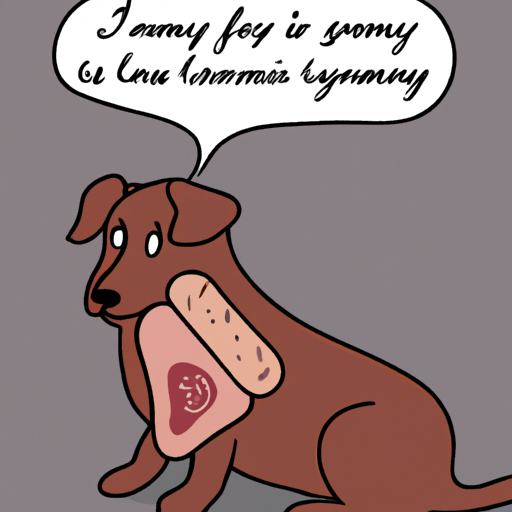1. Understanding Your Dog’s Digestive System
You must know that your dog’s digestive system is significantly different from yours. Dogs, descending from wolves, are primarily carnivorous. However, that doesn’t mean they can handle all types of meat.
The domestication of dogs has made their diet more versatile, but some foods are still hard for them to digest. Ham, a processed meat product, falls into this category. Its high fat content, sodium levels, and sometimes sugar or other additives can wreak havoc on your dog’s digestive system.
As a caregiver, your role is to provide a healthy and balanced diet for your pet. So, let’s dive deep into why ham is not a suitable option for your dog.
2. The Hidden Dangers in Ham
At first glance, ham might seem like an excellent treat for your dog. After all, it’s meat, right?
Unfortunately, the truth isn’t that simple. Here’s a quick rundown of the problems:
-
High Fat Content: Ham is rich in fat, which can lead to obesity and pancreatitis in dogs. A single slice could contribute a significant amount of unhealthy fats to your dog’s diet.
-
High Sodium Levels: Ham is typically cured and contains high levels of sodium. This can cause increased thirst and urination in dogs, leading to the risk of dehydration.
-
Additives: Some hams are cured with harmful additives like nitrates and nitrites, which can be toxic to dogs.
| Dangers | Impact |
|---|---|
| High Fat Content | Can lead to obesity and pancreatitis |
| High Sodium Levels | Can cause increased thirst, urination and dehydration |
| Additives | Can be toxic to dogs |
3. The Impact of Feeding Ham to Dogs
Now that you understand the risks, it’s essential to know the potential consequences of feeding ham to your dog. These might include:
- Digestive Issues: Diarrhea, vomiting, and stomach pain are common symptoms.
- Obesity: Weight gain can lead to a host of other health issues, such as arthritis.
- Pancreatitis: This can be a life-threatening condition requiring immediate medical attention.
4. Alternatives to Ham for Dogs
Don’t despair! There are plenty of other options for your canine companion.
- Chicken, turkey, and fish are all lean meats that are much safer for your dog to consume.
- Vegetables like green beans, carrots, and peas can be an excellent addition to their diet.
- High-quality dog food provides a balanced diet and ensures your dog gets the necessary nutrients.
5. FAQ
Q: Can dogs eat ham bones?
A: No. Ham bones can splinter and cause internal damage or blockages.
Q: What if my dog accidentally eats ham?
A: If it’s a small amount, monitor for any signs of distress. If they consume a large amount or show symptoms like vomiting or diarrhea, contact a vet immediately.
Q: Are there any types of ham that are safe for dogs?
A: No. All types of ham pose the same risks due to their high fat and sodium content.
Q: What should I do if my dog has eaten ham and appears sick?
A: Contact your vet immediately. They can provide guidance based on the amount consumed and the symptoms your dog is exhibiting.
As a caregiver, you want the best for your pet. While it might be tempting to share your ham sandwich with your canine companion, it’s best to stick to foods that promote their health and longevity.



